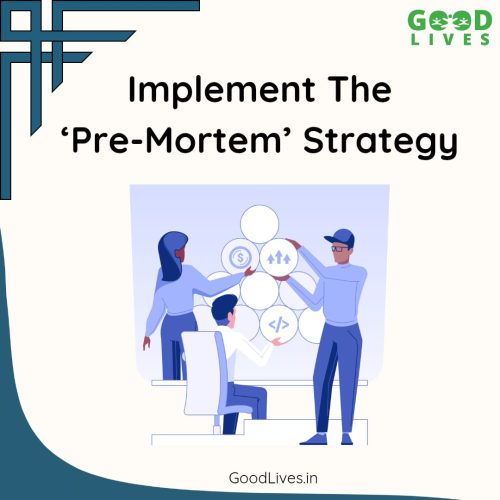
Ever felt like you could complete a certain task before the deadline, solely because you thought it was easy but ended up undermining the time and effort that went into completing that easy yet tedious task, thus missing your deadline?
It happens to the best of us since the human mind is a fickle place.
The planning fallacy is a cognitive bias that causes people to underestimate the time, effort, and resources needed to complete tasks. This tendency often leads to missed deadlines and last-minute stressful and inefficient work processes, whether in personal projects or professional settings. Thus, by adopting a structured approach and leveraging past experiences, it’s possible to optimize the flow of work management.
In this article, we delve into four insightful strategies to escape the planning fallacy and ensure more achievable realistic plans for all of us.
4 Insightful Ways To Escape Planning Fallacy
1. Break Down Tasks into Smaller Steps To Escape Planning Fallacy

We often tend to view an objective as a singular, oversized block rather than a sequence of smaller, manageable actions. It either tends to overwhelm us thus leading to procrastination or leads us to believe we could ace it all at the eleventh hour. The key to better planning is breaking tasks into micro-blocks.
For example, examinations are the time when procrastination and stress loom over the minds of every student. Even when assigned days of study leave, students make the mistake of thinking they can cover an entire syllabus in a few days, only to realize too late that they underestimated the time and effort required.
Instead, a study plan could be devised by breaking it into smaller tasks- such as reviewing one chapter per day, making summary notes, and revising key concepts. This method creates a structured roadmap and prevents last-minute time crunches. Using productivity tools like Trello or even a simple to-do list helps monitor delays and adjust plans accordingly.
And if you want something more holistic, the GoodLives App includes well-being nudges that help you stay focused without burning out.
By consistently reviewing your progress, you can identify bottlenecks early and make necessary adjustments, ensuring a more realistic approach to time management. Implementing this strategy not only improves time estimation but also enhances efficiency and productivity in any project.
2. Use Historical Data for Better Estimation To Avoid planing Fallacy

Relying solely on intuition often leads to overconfidence and unrealistic time estimates.
One of the best ways to improve estimation is by learning from past mistakes. Recognize the mistakes made in the past so that you can consider those and refine your work accordingly. A highly effective technique is reference class forecasting, which involves comparing your current project to a database of similar past ones.
For example, if a marketing campaign is planning a product launch, it’s estimated to take three weeks to do its publicity and branding. However, due to unforeseen circumstances, it ended up taking 5 weeks. This data can be used to adjust your own project’s timeline. This approach helps mitigate optimism bias, which often leads individuals to undermine the complexity and time required for a task.
Additionally, implementing buffer time for contingencies is crucial for managing unforeseen setbacks. If a task is expected to take 5 hours, allocating 20-30% extra time provides flexibility to take into consideration if any setback occurs. This data-driven approach is widely used in project management, ensuring that teams meet deadlines without unnecessary stress.
3. Seek External Opinions and Feedback To avoid Planning Fallacy

A third point of view of your project can help you gain insights that you would have never trodden upon alone. When working alone, it’s easy to assume that all factors have been accounted for, but external reviewers can often identify overlooked risks or unrealistic assumptions.
Their perspective helps refine the roadmap into a structured one thus setting realistic deadlines. Consulting experts or individuals with experience is another effective strategy. Their practical experience helps in creating more reliable project timelines. Additionally, collaboration within a team enhances estimation accuracy through collective intelligence.
Instead of relying on a single person’s judgment, group discussions allow for different perspectives, leading to a well-balanced roadmap. By actively seeking feedback, leveraging expert knowledge, and engaging in team discussions, you can significantly reduce the risk of underestimation and ensure a more realistic and achievable project timeline.
4. Implement the ‘Pre-Mortem’ Strategy

The pre-mortem strategy is a powerful risk assessment tool that helps in anticipating potential failures before they take place thus optimizing project planning and execution. Unlike post-mortem which means analyzing failures after they happen, a pre-mortem is conducted at the beginning of the project thus allowing us to predict any possible obstacles that could obstruct the smooth working of the project.
For example, during a website development, the team might estimate that coding, testing, and deployment will take eight weeks. However by consulting experienced web developers and SEO specialists, they could predict possible bugs, compatibility issues across browsers, or issues in payment gateways.
Recognizing these risks early on can help in refining the project plan by allocating extra time for bugs, testing of smooth operation of payment gateways, and buffering time for website working. By integrating pre-mortem analysis into project planning, teams can make more informed decisions, enhance risk management, and improve overall project success rates.
Overcoming the planning fallacy requires a change in mindset and not falling back into the old methods of undermining the effect of time and effort. By breaking down tasks into sub-steps, using historical data for better prediction, seeking external feedback, and implementing the pre-mortem strategy, individuals can set realistic targets to achieve their deadlines and at the same time, present a finely worked-up work.
These approaches not only help in minimizing delay but at the same time, help the human mind achieve the targets easily thus not stressing over last-minute work.
With consistent application, planning can become more precise, leading to smoother and more successful project outcomes where you don’t fall back like before!
If anxiety, overthinking, or burnout from poor planning has been affecting your mental well-being, it might be time to talk it out. Start your journey to clarity today—click here to explore seamlessly.
0 Comments